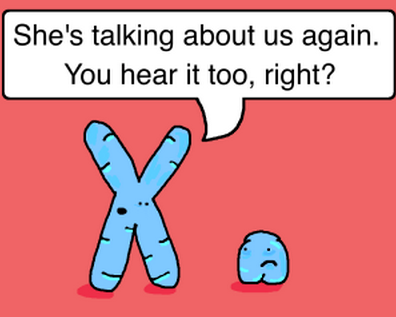Clarification, Sex Determination, and Cheesecake
Even though I was never on the debate team, I do love a good argument. And I like my arguments like I like my cheesecake: beautifully simple and without syrup on top.

Note: I foresee my love of plain New York cheesecake to be far more inflammatory than anything I could possibly say about gay marriage. That should tell you something about the US of A.
I wrote last week about how a law that defines marriage as a union between a man and a woman makes no sense because there is no good definition of man or woman that applies to everyone (because that’s what laws should be able to do at a bare minimum–apply to all people). I talked about intersex people that defy any definition of man and woman that could be written into a law. But I’m not saying that intersex and homosexuality are related.

I’m also in no way saying that this is the best argument for legalized gay marriage. I would hope we would make gay marriage legal for far more interesting reasons (such as the fact that it’s discriminatory and unfair not to), not just because a law against it would leave out intersex people. Mine is a logistical argument and nothing more. I left out all the really salient points like ethics, equality, and justice. Because those things are horribly interwoven with people’s opinions. And opinions are hard things to argue. Also, the people who have the opinions are sometimes scary.








May we never forget that biology is a complicated, messy, random process that has found several ways for dealing with sex and reproduction (and just about every other bit of life business). There is really no rhyme or reason for any of it. If it works, it works. If it doesn’t, you die. That’s pretty much the only rule in nature that applies all the time.




